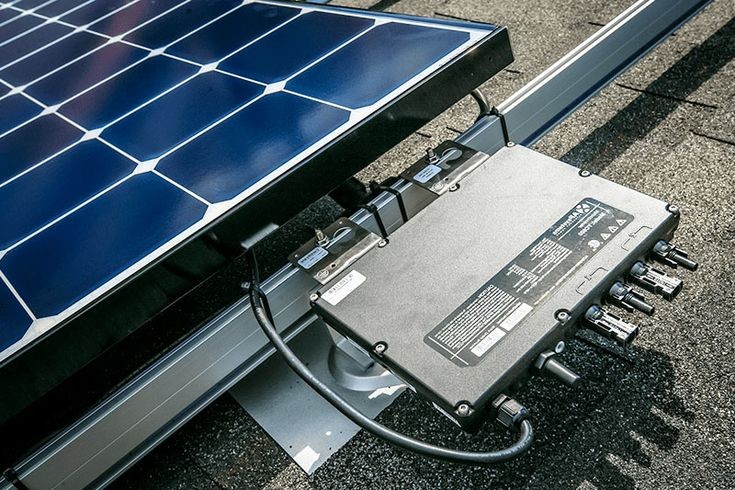
Are you ready to embrace the power of the sun? The future of solar energy is brighter than ever, and we have an exciting innovation to share with you – Sunpower Microinverters. These tiny devices are revolutionizing the way we harness solar energy, maximizing efficiency and transforming rooftops into mini power plants. Join us as we delve into the world of sunpower microinverter, exploring their benefits, features, and how they are paving the way for a sustainable future powered by the sun. Get ready to be blown away by this game-changing technology!
What Are Sunpower Microinverters?
As the solar industry continues to evolve, so do the products that are available to consumers. One such product is the Sunpower microinverter. Microinverters are a type of inverter that converts direct current (DC) into alternating current (AC). They are typically used in photovoltaic (PV) systems and are designed to work with a single solar panel or a small group of panels.
Sunpower is one of the leading manufacturers of microinverters. Their microinverters are some of the most efficient on the market, with an efficiency rating of 97%. They are also one of the only manufacturers that offer a 25-year warranty on their products.
Microinverters have a number of advantages over traditional central inverters. One advantage is that they can maximize power output from each individual solar panel. This is because each solar microinverter is optimized to work with a specific PV module. Traditional central inverters, on the other hand, are not as efficient at converting DC to AC power and can lose up to 20% of the power generated by the PV system.
Another advantage of microinverters is that they improve system reliability. This is because each solar panel has its own dedicated inverter, so if one panel fails, the rest of the system can continue to operate normally. Central inverters, on the other hand, can be brought down by a single panel failure.
Benefits of Sunpower Microinverters
There are many benefits of Sunpower microinverters. One benefit is that they are very efficient. They have a conversion efficiency of up to 97%, which means that more of the energy from the sun is converted into electrical energy than with other types of inverters. This makes them ideal for use in solar panels, as they can produce more electricity from the same amount of sunlight.
Another benefit of Sunpower microinverters is that they are very durable and long-lasting. They are designed to withstand harsh conditions, such as high temperatures and high winds. This makes them ideal for use in areas where the weather can be extreme, as they will still be able to function properly even in these conditions.
Sunpower microinverters have a lower carbon footprint than other types of inverters. This is because they do not use fossil fuels in their operation, which means that they produce no emissions. This makes them an environmentally friendly option for those who are looking to reduce their carbon footprint.
How Do Sunpower Microinverters Work?
Sunpower microinverters are the next big thing in solar energy technology. They are small, efficient, and offer a number of advantages over traditional inverters.
Traditional inverters convert direct current (DC) from the solar panels into alternating current (AC), which is then used to power your home or business. Sunpower microinverters, on the other hand, work by directly converting DC into AC.
This has a number of advantages. First, it means that each individual solar panel can be connected to its own microinverter. This makes the system more reliable overall, as any problems with one panel will not affect the others.
Second, it allows for greater flexibility when it comes to placement of solar panels. With traditional inverters, all of the panels must be facing in the same direction in order to work together. With microinverters, however, each panel can be facing a different direction, which means you can make better use of available space.
Microinverters are more efficient than traditional inverters. This means that you’ll get more power out of your solar panels overall, making your investment in solar energy pay off even more quickly.
DIY Solar Systems with Sunpower Microinverters
As the cost of solar panels continues to drop, more and more homeowners are considering installing their own solar systems. One of the key decisions when designing a solar system is choosing the right inverter. Solar inverters convert the direct current (DC) output of your solar panels into alternating current (AC), which is what your home uses.
Sunpower microinverters are some of the most efficient and reliable on the market. They offer a number of advantages over traditional central inverters, including higher energy yields, easier installation, and better safety.
If you’re thinking about installing a DIY solar system, Sunpower microinverters are definitely worth considering. In this article, we’ll explore some of the key features of Sunpower microinverters and how they can benefit your home solar system.
Solar Energy Solutions with Sunpower Microinverters
The Sunpower microinverter is a cutting-edge solar technology that offers a number of advantages over traditional solar panels. Microinverters are more efficient than traditional panels, meaning that they can produce more electricity per square foot of roof space. They are also easier to install and maintain, making them a great option for those looking to reduce their carbon footprint.
Sunpower microinverters are the perfect solution for those looking to take advantage of the many benefits of solar energy. Contact us today to learn more about how we can help you save money and reduce your carbon footprint with our state-of-the-art solar technology.
Cost Considerations for Installing Sunpower Microinverters
The cost of installing Sunpower microinverters will vary depending on the size and location of your solar panel array. In general, the cost of installing a Sunpower microinverter system will be higher than the cost of installing a traditional inverter system. However, the increased efficiency and reliability of Sunpower microinverters may offset the initial investment cost over time.
The Future of Solar Energy with Sunpower Microinverters
As the world searches for cleaner, more sustainable sources of energy, solar power is becoming an increasingly popular option. Solar panels are now being used in a variety of settings, from homes and businesses to large-scale solar farms. And as solar technology continues to evolve, the possibilities for its applications are only expanding.
One of the latest innovations in solar technology is the Sunpower microinverter. This device helps to increase the efficiency of solar panels by converting direct current (DC) into alternating current (AC). AC is the kind of electricity that powers our homes and businesses.
Sunpower microinverters are also able to optimize power output from each individual solar panel. This is possible because each microinverter is attached directly to a single panel. This way, if one panel is shaded or not receiving full sunlight, the others can still produce power at full capacity.
The use of microinverters also makes it possible to install solar panels on a variety of different roof types and orientations. This flexibility means that more homeowners and businesses can take advantage of solar power, regardless of their specific circumstances.
The Sunpower microinverter is just one example of the exciting new developments taking place in the world of solar energy. As we continue to explore and innovate, the future of solar energy looks brighter than ever before!
Conclusion
Solar energy has been around for decades, but with the introduction of Sunpower microinverters, it is now more accessible than ever. Sunpower’s innovative product can help homeowners take advantage of solar power and reduce their electricity bills in the process. Furthermore, this technology provides a glimpse into what our energy future may look like: one that utilizes renewable sources and makes them available to everyone. With continued research and development, solar energy could become even more efficient and cost-effective in the years to come – providing us all with an alternative to traditional forms of electricity generation.

